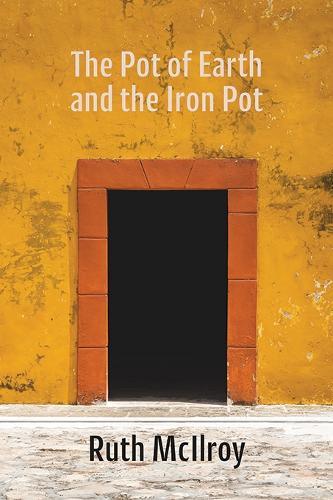The Pot of Earth and The Iron Pot
Ruth Mcllroy
(Shearsman books, 2022); pbk: £10.95
The mythological state of history can cast a shadow on the apparent mundanity of contemporary life. It can be tempting to look at the world and proclaim that we have reached the end of a time where people can look at the world around them with childish wonder. It takes poetic works such as Ruth Mcllroy’s The pot of Earth and the Iron Pot to reinvigorate the majesty of day-to-day life, dissipating the numbness that often accompanies familiarity. Mcllroy’s collection deftly weaves history and day-to-day life with irreverence and symphonic lyricism. Throughout the collection, the poetry flows perfectly, each poem joyously playing off her whimsical style with the wit and sincerity that she deploys in discussing the subject matter, which ranges from public swimming pools to the work of the cosmological philosopher Giordano Bruno. In fact, the discussion of Giordano Bruno in the poem, ‘From De la Causa, Principio e uno (1584)’, is based on the safety granted by the perception of importance, an artificial separation that prevents connections between parts of the world:
If all forms are contained as from that
and the same by virtue of the efficient (on what can be indistinct
likewise from her second being)[.]
One of the most striking aspects of this collection is the musical style of writing. There are consistent beats to the language, with each poem having its own unique rhythm. This style of writing embraces simplicity, making each poem striking and easy to read. It also allows the subject matter and tone to take centre stage as it adapts and reflects each piece, keeping the individual flavour while intertwining the collection. Given the diverse array of subjects on display, the unifying rhythms are a brilliantly utilised aspect of Mcllroy’s writing style. Poems such as ‘DSM IV’, which use a varied visual pattern, benefit from this rhythmic style of writing, as the conflicting visual style makes sense in the context of the auditory experience of reading the poem, which ties into the subject matter of personality disorders and the medicalisation of the human experience.
Praise me! PRAISE ME! Provocative Relationships
Attention Influenced Speech Emotional
Makeup Exaggerated. I do I do this?
(Numerous other strategies are used.)
I am placed in a field of beneficence,
an environment experienced as invalidating.
Mercurial disorder; I dwell on the border.
Oh folie maniaco; of folie! Said he.
He’s a loosely-conceived designation,
Experiencing dysregulation,
Anygdalaic activation.
And melancholique ideation[.]
Alongside the use of rhythm, the broad range of subjects discussed through the breadth of this collection make it well suited to reading in sequence. There is a deliberate interplay between each poem, building up over the course of the collection as you develop an understanding of how these seemingly separate pieces are all connected by the flawed state of the human condition and the equality inherent to unimportance. It’s an interesting theme for a poetry collection as it grants the author freedom over the subject matter, and opens up a relevant discussion on the idea of connectedness and the role of the reader in a collection. Rather than her working to make the poetry easier to interpret the collection acts as a guide on how to interpret the poetry, a choice that is really effective in making the title suitable for multiple readings; for each time you understand her viewpoint more and have more context for each reading. The opening poem, ‘I Read that My Job Was To Woo The Reader’ acts as an bold statement of this intent. Illustrating the conflict between genuine expression and palatability to a wide audience.
(finding your voice
That’s the kiss of death isn’t it)
5. it’s not always easy to find THE THING
STOP. LIMITED. PAPER [.STOP]
Ellen Harrold


Leave a Reply